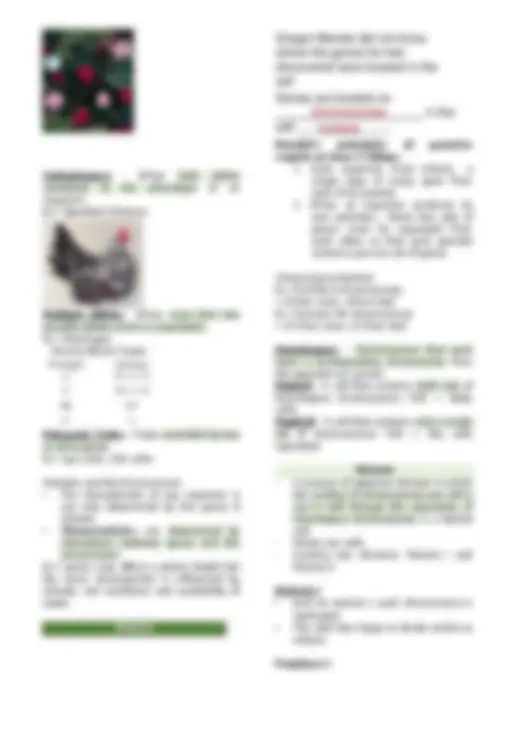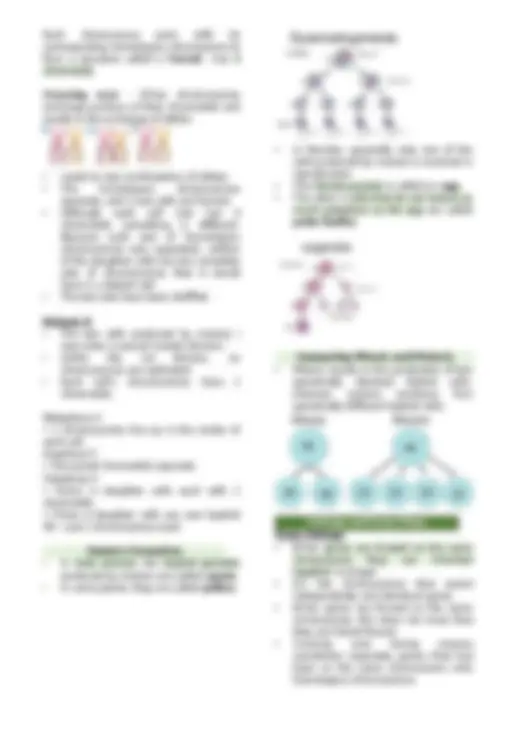





Study with the several resources on Docsity

Earn points by helping other students or get them with a premium plan


Prepare for your exams
Study with the several resources on Docsity

Earn points to download
Earn points by helping other students or get them with a premium plan
Community
Ask the community for help and clear up your study doubts
Discover the best universities in your country according to Docsity users
Free resources
Download our free guides on studying techniques, anxiety management strategies, and thesis advice from Docsity tutors
This document is about the basic terms in Genetics.
Typology: Lecture notes
1 / 5

This page cannot be seen from the preview
Don't miss anything!




The Work of Gregor Mendel
The F 1 Cross
Each chromosome pairs with its corresponding homologous chromosome to form a structure called a Tetrad - has 4 chromatids. Crossing over - When chromosomes exchange portions of their chromatids and results in the exchange of alleles